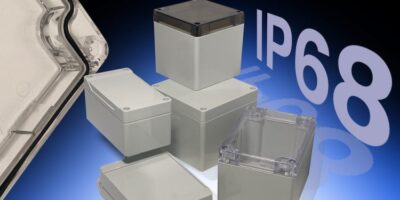A mixed-signal front-end (MxFE) RF data converter from Analog Devices combines analogue and digital signal processing (DSP) for wireless equipment such as 4G LTE and 5G millimeter-wave (mmWave) radios. The AD9081/2 MxFE platform allows manufacturers to install multi-band radios in the same footprint as single-band radios, which can triple call capacity of today’s 4G LTE basestations. The 1.2GHz channel bandwidth RF data converter also enables wireless carriers that have additional antennae to cell towers to meet the higher radio density and data rate requirements of emerging mmWave 5G, adds Analog Devices.
The AD9081 and AD9082 provide software configurability to allow designers to customise radios as frequency translation and filtering moves to the digital domain.
The AD9081 and AD9082 MxFE converters integrate eight and six RF data converters, respectively, which are manufactured using 28nm CMOS process technology.
The MxFE platform processes more of the RF spectrum band and embeds DSP functions on-chip to enable the user to configure the programmable filters and digital up and down conversion blocks to meet specific radio signal bandwidth requirements. This results in a 10X power reduction compared to architectures that perform RF conversion and filtering on the FPGA, while freeing up valuable processor resources or allowing designers to use a more cost-effective FPGA.
Both MxFE options achieve the industry’s widest instantaneous signal bandwidth (up to 2.4 GHz), according to Analog Devices. This simplifies hardware design by reducing the number of frequency translation stages and relaxing filter requirements. This level of integration lowers chip count and yields a 60 per cent reduction in PCB area compared to alternative devices, adds the company.
The MxFE platform meets the needs of other wide-bandwidth applications in 5G test and measurement equipment, broadband cable video streaming, multi-antenna phased array radar systems and low-earth-orbit satellite networks, confirms Analog Devices.
The AD9081 will be available as either a quad 12-bit, 4Gsamples per second and quad 16-bit 12Gsamples per second ADC in 324-BGA thermally enhanced packages. Sampling will begin in September, with full production scheduled for March 2020.
The AD9082 will be available as a dual 12-bit, 4Gsamples per second and quad 16-bit 12Gsamples per second ADC in the same package. Sampling will begin in September with full production scheduled for December 2019.







